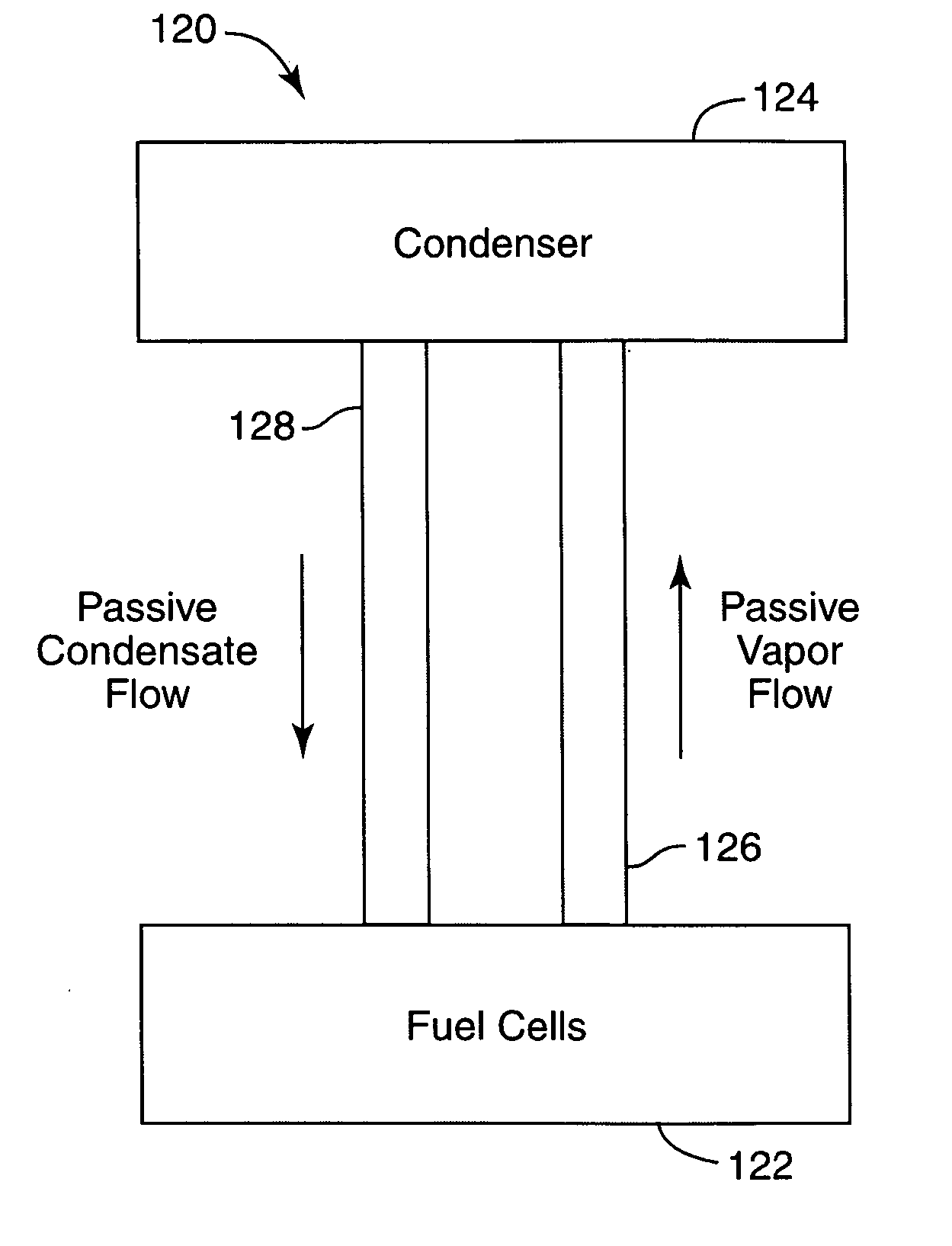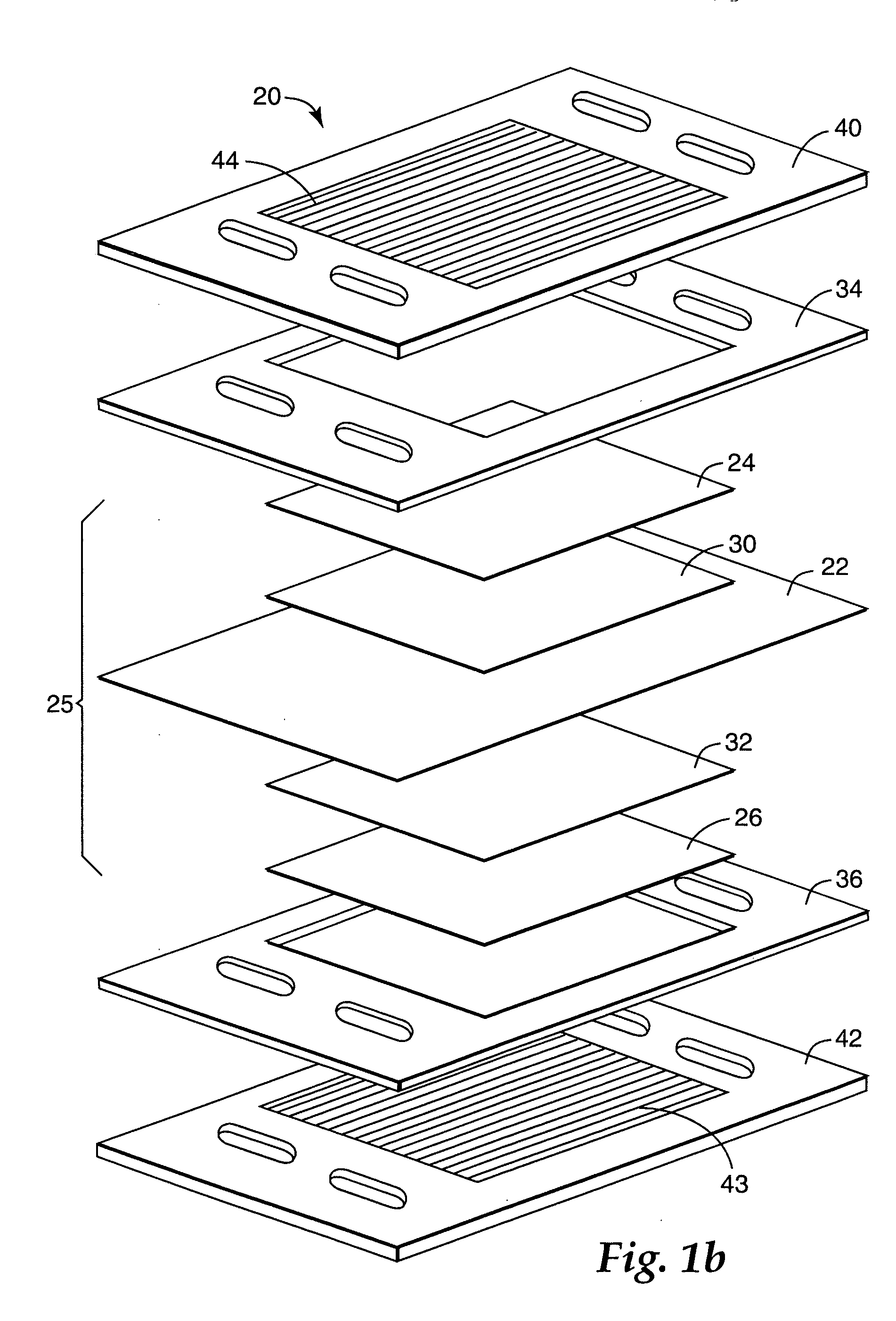Passive dual-phase cooling for fuel cell assemblies
- Summary
- Abstract
- Description
- Claims
- Application Information
AI Technical Summary
Benefits of technology
Problems solved by technology
Method used
Image
Examples
example
[0079] An apparatus shown generally in block diagram form in FIG. 2a was used to investigate parameters within a typical flow field coolant plate. This apparatus included a 7 inch by 20 inch aluminum heater plate 1 / 16″ thick into which a 4 inch by 15 inch recess 1 / 32 inch deep was machined to accommodate 5 flat, adhesive backed KAPTON heaters (Minco Model 5466, 3″ by 4″, nominal resistance 4.1 ohm, Minco Inc., Minneapolis Minn.). The remaining recess was filled with plasticiene clay. This back surface of the heater plate was mated to a 0.75 inch Plexiglas plate of the same dimensions. A thin layer of thermal interface grease (Wakefield Thermal Compound 120-2< Wakefield Engineering, Inc. Wakefield, Mass.) mated the front surface of this plate to the back of another 1 / 16″ aluminum channel plate. The back of this plate had 1 / 32 inch deep grooves into which 0.01 inch diameter type-T thermocouples were placed, terminating at the horizontal centerline and in vertical locations that corres...
PUM
 Login to View More
Login to View More Abstract
Description
Claims
Application Information
 Login to View More
Login to View More - R&D
- Intellectual Property
- Life Sciences
- Materials
- Tech Scout
- Unparalleled Data Quality
- Higher Quality Content
- 60% Fewer Hallucinations
Browse by: Latest US Patents, China's latest patents, Technical Efficacy Thesaurus, Application Domain, Technology Topic, Popular Technical Reports.
© 2025 PatSnap. All rights reserved.Legal|Privacy policy|Modern Slavery Act Transparency Statement|Sitemap|About US| Contact US: help@patsnap.com



